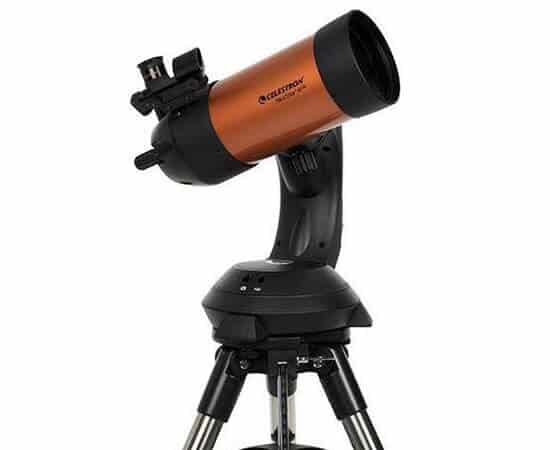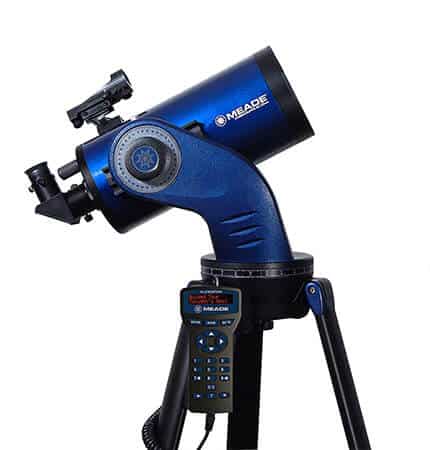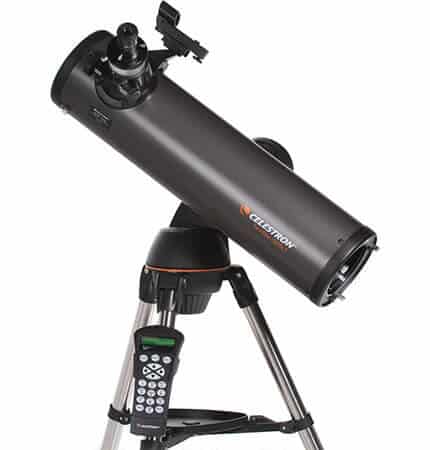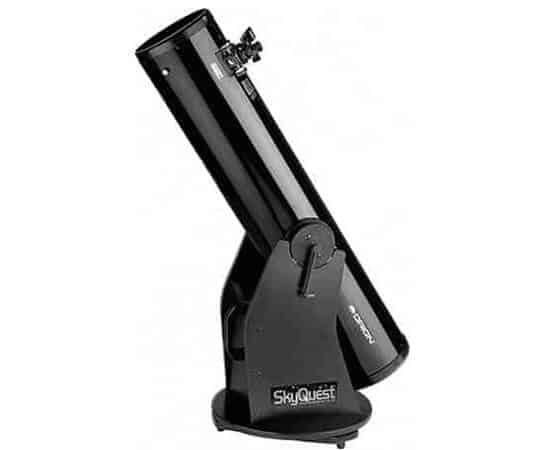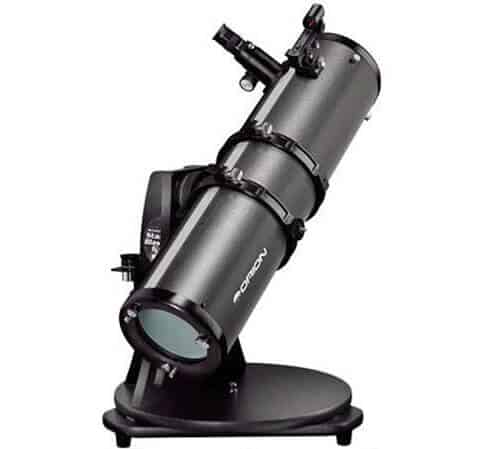Best Telescopes Under $500
ULTIMATE BUYING GUIDE FOR 2020
- Last Updated On:
Introduction
Telescopes come in different sizes, shapes and construction technologies, but they also come at very different price points.
A mid-tier telescope retails at 300-500 USD and can be considered both a beginner’s telescope, as well as an expansion of an existing collection for experienced space observers.
No matter which category you belong to, you want to make sure that you are getting the best product possible for your hard earned money. That is why we’ve made this list of Top 5 best telescopes under $500, that are worth every penny!
If you want to learn more about what features make a telescope great, keep on reading.
Quick Rundown
THESE ARE OUR TOP PICKS SUMMARISED FOR:
24th April 2024

- 130mm Newtonian Reflector Telescope
- Anti-Reflection Multi-Coated Optics

- Celestron’s iconic “orange tube” design
- 4-inch aperture provides excellent light-gathering ability

- Aperture: 130mm
- Computerized hand control with 4,000+ object

- 8" diameter reflector optics
- The ultra-stable Dobsonian base

- A fun, capable, and simple
- Substantial 6" aperture reflector optics
Telescope Buying Guide
As we already mentioned, telescopes differ a lot in construction, and those differences will have a big impact on what they are meant to be used for.
There is a big variation between telescopes used for watching mountains and cities, than those for watching the Moon and neighbour planets, or the ones for deep space exploration.
To get a detailed understanding of different telescope types, make sure to check out our detailed telescope buying guide.
Table of Content
What is generally important are good optics for a clear view (very important for astrophotography!) paired with a stable and secure stand as well.
One common misconception is that telescopes are meant to magnify small objects. The objects in space are certainly not small – they are enormous!
They only appear small to us. And if we only magnify what we can see with our eyes, we would simply get a big smudge with a distorted picture. Imagine this scenario as zooming into a low-quality picture.
What is truly important is the gathering light capability. This will allow us to see more details – only then magnification actually makes sense.
So, while magnifying power is important, it relies on a more significant feature – objective diameter, or aperture.
A bigger aperture allows for greater magnification. But keep in mind that magnification also depends on the focal ratio.
So if you want to look at smaller details with a bigger magnification, you might want to use slow telescopes with a high f-number, instead if you want a wide field of view with lots of stars and galaxies, a fast telescope with a low f-number is a better choice.
Finally, make sure to always double check whether or not your telescope comes with a stand because some models do ship without a stand and mount.
You can also consider telescopes with GoTo Mounts, these will help you guide the telescope automatically with a handheld computer.
If your telescope ships without any mount, you will need to invest a little bit into a compatible stand.

APERTURE
102mm
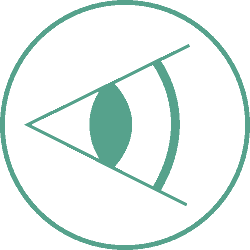
FOCAL LENGTH
1325mm

MOTORIZED
Yes

Mount type
Alt-Azimuth
Overall:
Celestron is a very reliable brand and you can rarely go wrong with them. The NexStar 4 SE is one of the many orange tube series models that are famous for their great light-gathering ability and the sharp view that they offer.
This is a great computerized model that can be used for astrophotography (you can also check the our list of Astrophotography Telescopes). That is why you also have an option of ordering the same model with the NexYZ Adapter for your smartphone.
This is the only orange tube telescope with a Maksutov-Cassegrain design (others use a Schmidt-Cassegrain design), so the general feel is slightly different, but it is nothing to worry about.
The battery life on this model isn’t the greatest and you have to get the charger separately. If the telescope consumed less energy, it might have taken the number one spot. Another thing to keep in mind is that this telescope is not as easy to use as other models, it will require a bit of patience with assembly and adjustment.
Conclusion:
If you know how to properly operate a telescope and prefer good results over ease of use, then the Celestron NexStar 4 SE will not disappoint you! If can afford a to spend more you can also check it’s big brother the Celestron NexStar 8SE.
Specs:
- Optical Design: Maksutov-Cassegrain
- Focal ratio:1325
- Aperture: 102 mm (4.02 in.)
- Weight: 30 pounds
- Eyepiece magnification: 53x
- Dimensions: 32.4 in. x 27.2 in. x 13.4 in.
- Coatings: StarBright XLT
- Mount: Single fork arm
- Fairly portable
- Stable steel tripod
- Excellent optics
- Short battery life
- Slow alignment

APERTURE
127mm

FOCAL LENGTH
1900mm

MOTORIZED
Yes

Mount type
Single Arm Mount /Vixen style
Overall:
In the 500 USD range, the Meade StarNavigator shines better than the competition. The reason is that this is a great Newtonian telescope that has reduced chromatic aberration, providing a clear viewing experience and can be used for deep space exploration.
The optics are great and the stand is stable so it is useful for both beginners and intermediate users.
As a big bonus the package includes a travel bag.
If you can afford it this is without a doubt the best option of this list. The price-performance ratio that Meade achieved with this scope is flawless.
The only thing to note about this telescope is that getting parts for repairs can be difficult. But if you handle the telescope with care, it can last you a very long time.
Conclusion:
While is definitely not a professional telescope, If you know how to properly use and adjust a telescope, the StarNavigator NG 125 will be an amazing addition to your collection or an ideal first telescope. Handle it with care and it will last you for years to come.
- Compatible with 2 inches pieces, making it quite versatile
- Includes a great pair of eyepieces of 25 mm (26 x magnification) and 9 mm (72 x magnification)
- The tube and the tripod are quite light, and it fits in the back of a normal car
- Includes a steel tripod, making the telescope more stable. Still, if you want to use it on a windy day, you will need to find something to balance it
- Suitable for astrophotography. The photos you can capture with a computerized scope of this quality will be breathtaking, just beautiful and clear
- You need a lot of patience to learn how to use the SkyAlign feature properly
- If you only use the telescope from a single observation point, you will need to enter the date and the time every time you want to use it since there is no date and location memory

APERTURE
130mm

FOCAL LENGTH
650mm

MOTORIZED
No

Mount type
Alt-Azimuth
Overall:
We are still sticking with Celestron, but this time, we are taking a look at a very different model.
First of all, the 130SLT is a Newtonian telescope. Newtonians are somewhat tricky to set up but offer great results once you get them going.
The Newtonian design with mirror gives fully color-corrected views that are best suited for astronomical use and great for astrophotography.
The optics are flawless and if you can get out of the city, you will get perfectly clear images.
This model is a little bit more beginner friendly than the last one, but still requires some patience. The 130SLT is very light and portable, as well.
The downside is that the mount is not as good as the 4 SE model. The rest of the problems are very similar to the ones we had with the 4 SE model.
The battery life is not the greatest and the StarAlign technology sometimes works and sometimes doesn’t. Usually, updating the firmware solves the issue, though.
Conclusion:
As with many other Celestron models, you’re getting superb optics at a moderate price, but the software is not always the best. For best results, take your time and be patient. The views and the photographs will be well worth it.
Specs:
- Aperture: 130mm; focal length: 650mm; compatible with 2 inch eyepieces .
- Focal ratio: f/5; focal length of eyepiece 1/2: 25mm/9mm.
- Magnification of eyepiece 1/2: 26x/72x.
- Highest/lowest useful magnification: 307x/19x.
- Light gathering power: 345x.
- Apparent field of view: 1.7 degrees; Linear field of view (at 1000Yds): 91ft .
- Computerized hand control with 4,000+ object database including over 600 galaxies, 300 clusters and more .
- SkyAlign allows you to align on any 3 bright celestial objects
Motorized Altazimuth mount
- Great optics at a low price
- Newtonian design
- Stable and sturdy
- Short battery life
- Generally performs poorer than more expensive Celestron models

APERTURE
203mm

FOCAL LENGTH
1200mm

MOTORIZED
No

Mount type
Dobsonian
Overall:
The SkyQuest XT8 is part of the SkyQuest series by Orion and has received very positive feedback from the Astronomy community. We can only agree on this one as the XT8 is a great dobsonian telescope that offers superb optics for this low price point, making this telescope a borderline budget model.
This telescope is awesome for exploring local planets and Jupiter looks especially stunning because of the amazing optics.
The aperture level is fairly high for the money, but there is a little bit of color distortion. If you’re into astrophotography, you can get very sharp images and do a slight color correction with image software later on.
The Orion SkyQuest XT8 is somewhat bulky and the red dot finder doesn’t perform amazingly. This makes it more of a garden telescope if you live in a place with little light pollution.
While not the most portable solution, it offers great results and is a great example of what a “bang for the buck” model should be.
Conclusion:
If you want an affordable Dobsonian model that will be reliable but needs a little bit of manual adjustment to function properly, then the XT8 might be just for you.
Keep in mind that it is sturdy but also somewhat bulky so plan accordingly.
Specs:
- Telescope Aperture: 8″ Telescope
- Focal Ratio: f/6 Telescope
- Focal Length: 1200
- Limiting Stellar Magnitude: 14.2
- Lowest Useful Magnification: 29x
- Highest Useful Magnification: 300x
- Very good Dobsonian model with amazing optics
- Fantastic view of neighbor planets
- Durable and stable
- Red dot finder could work better
- Bulky and heavy

APERTURE
127mm

FOCAL LENGTH
750mm

MOTORIZED
No

Mount type
Alt-Azimuth
Overall:
Orion is a reliable company, so we have decided to include one more model: the StarBlast6 Astro. This is a good telescope for beginners who can invest a bit more money in the hobby and who don’t want to deal with some of the problems that cheaper telescopes bring.
The telescope is pretty portable and the 6-inch aperture offers surpassing details.
The focal length is somewhat short, so higher magnifications are not the strength of this model, but again, this is because of the ease of use and portability.
The EZ finder is solid (though it could be better) and the setup is fast and minimal, so even complete beginners will be able to start out with the StarBlast 6. The tabletop design is good for home use, but you will have to find a way to use it outside of the city.
We recommend getting a 2xBarlow lens or something similar for even better results.
Conclusion:
If you are searching for something that is both cheap and easy to use, then this is the right model. While not the most powerful telescope in the world, it is certainly one of the best beginner’s models out there.
Specs:
- Product dimensions: 5 x 21 x 19.1 inches
- Aperture: 150mm-200mm
- Minimum magnification: 21X
- Includes 25mm and 10mm Sirius Plossl 1.25″ telescope eyepieces
- 150mm (5.9″) f/5.0 parabolic mirror configuration
- Grab-and-go portability
- Very portable and compact design
- Easy to use and setup
- Very good specs considering the price
- EZ Finder is not as good as it could be
- Requires some type of improvised stand
Conclusion
Choosing a telescope is not always easy. So many types, so many specs, so many planets to explore… The only way to get your ideal scope is to do enough research.
Make sure to check out our more expensive telescope to see what a little bit more money can get you, or compare these models with those from our low-budget review.
Choosing a telescope is not always easy. So many types, so many specs, so many planets to explore… The only way to get your ideal scope is to do enough research.
Make sure to check out our more expensive telescope to see what a little bit more money can get you, or compare these models with those from our low-budget buying guide.
Keep in mind to always read the description and to see which parts and features are included. That way, you will know exactly what to expect and you probably won’t be disappointed.
SUBSCRIBE TO OUR WEEKLY NEWSLETTER
